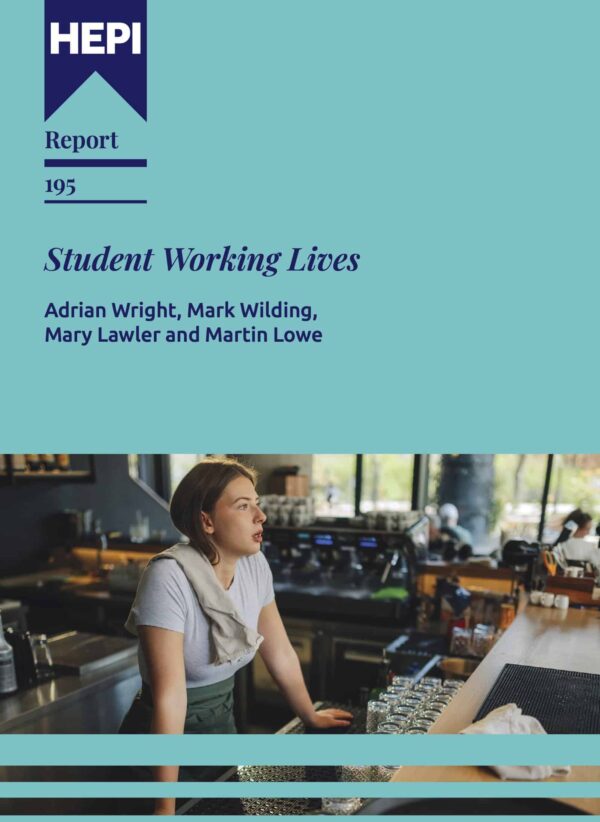WEEKEND READING: The teacher training placement crisis
This blog was kindly authored by Juliette Claro, Lecturer in Education St Mary’s University Twickenham.
Initial Teacher Education (ITE) providers across England are facing an escalating crisis: a growing inability to secure sufficient school placements for trainee teachers. With an average of 20 to 25% of unplaced trainee teachers, September 2025 has been challenging for universities and ITE providers. Despite policy ambitions to strengthen teacher supply, the reality on the ground is that many trainees’ hopes to start their first school placement in September were shattered due to a lack of school placements, especially in the secondary routes. This bottleneck threatens not only the future workforce but also the integrity of teacher training itself.
A system under strain
According to the Teacher Labour Market in England Annual Report 2025 by the National Foundation for Educational Research, recruitment into ITE remains persistently below target, with secondary subjects like Physics and Modern Foreign Languages (MFL) facing the most acute shortages. In 2024/25, Physics recruitment reached just 17% of its target, while MFL hovered at 33%. These figures reflect a long-standing trend, exacerbated by declining interest in teaching and competition from other professions.
But even when trainees are recruited, sometimes through international routes at considerable expense, placing them in schools has become increasingly difficult. The Department for Education’s Initial Teacher Education Thematic Monitoring Visits Overview Report (2025) highlights that many providers struggle to find schools with sufficient mentor capacity and subject expertise. The report reinforced the point that mentoring pre-service teachers in schools often relies on the goodwill of teachers, and when too many providers operate in one local area, competition becomes unsustainable. This is particularly problematic in shortage subjects, where schools may lack qualified specialists to support trainees effectively, for example, in Physics or Languages.
Mentoring is a cornerstone of effective teacher training. Yet research in 2024 from the National Institute of Teaching (reveals that mentors are often overstretched, under-recognised, and inadequately supported. Many people report sacrificing their own planning time or juggling mentoring duties alongside full teaching loads. As a result, there may be a rise in reluctance among teachers to take on mentoring roles, especially in high-pressure environments.
The government offers funding that aims to support mentor training and leadership, including grants for lead mentors, mentors and intensive training. However, these are often paid in arrears and come with complex conditions, making them less accessible to schools already grappling with budget constraints. Moreover, the funding does not always reflect the true cost of releasing staff from teaching duties to support trainees in schools.
Routes into teaching: a fragmented landscape?
The diversity of routes into teaching (School Direct, university-led PGCEs, Teach First, apprenticeships was designed to offer flexibility. But for ITE providers, it has created logistical headaches. Each route comes with its own placement requirements, mentor expectation, and funding mechanisms. Coordinating placements across this fragmented landscape is time-consuming and often leads to duplication or competition for limited school capacity.
As universities continue to battle through their own funding crises, competition for recruitment and placements clash with other local providers and alliances of School- Centred Initial Teacher Training (SCITT), resulting in a lot of demands but not enough offers for placements.
The 2024 ITE market reforms, which led to the de-accreditation of 68 providers, further destabilised the system. While many have partnered with accredited institutions to continue offering courses, the disruption has strained relationships between providers and with placement schools, resulting in reducing the overall number of placements available, where too many ITE providers end up saturating the same local areas for school placements.
The subject specialist shortages
The shortage of subject specialists is not just a recruitment issue: it is also a placement issue. In their 2025 report and recommendations for recruitment, retention and retraining the Institute of Physics (IoP) revealed that 58% of GCSE lessons in England are taught by non-Physics specialists.
When 25% of secondary schools do not have a Physics specialist teacher in-house and 63% of schools struggle to recruit specialist MFL teachers (British Council Language Trends 2025), it is no surprise that priorities for some school leaders is on the teaching of their students and not the mentoring trainee teachers. In many schools, Biology or Chemistry teachers cover Physics content, making it difficult to offer meaningful placements for Physics trainees. The same applies to Modern Foreign Languages, where schools often lack the breadth of language expertise needed to support trainees effectively. As non-core subjects may suffer from reduced curriculum time, finding enough teaching hours to allocate to a trainee teacher can become another challenge for some schools. Finally, as the recruitment crisis becomes more acute in more deprived areas, finding suitable mentors for trainee teachers in these areas become increasingly complex.
Without subject specialists, trainees may be placed in environments where they cannot observe or practise high-quality teaching in their discipline. This undermines the quality of training and risks having Early Career Teachers feeling ill-prepared for the classroom.
Teacher workload: the silent barrier
Teacher workload remains one of the most significant barriers to placement availability. The Working Lives of Teachers and Leaders Wave 3 Report (DfE, 2025) found that 90% of teachers considering leaving the profession cited high workload as a key factor. With rising demands around behaviour management, curriculum delivery and accountability, many teachers simply do not have the bandwidth to mentor trainees. Reduced school funding, less staff and more demands on schoolteachers has meant that it is not uncommon to have weekly meetings between teachers and trainees organised out of school hours, at 8am or at 5pm, after school meetings. This is particularly acute in schools serving disadvantaged communities, where staffing pressures are greatest and the need for high-quality teaching is most urgent. Ironically, these are often the schools where trainees could have the most impact, if only they could be placed there.
The perfect storm
As ITE providers navigate the currents and the storms of recruiting and placing trainee teachers into schools, the strain on school funding directly impacts the recruitment of future teachers. If ITE providers cannot provide school placements, teachers and schools cannot recruit. Is it, therefore, time to reconsider and revalue the mentors in schools who are the running engine of the training process whilst on school placement?
New for school mentors could include:
- Streamlining mentor funding to recognise fully and value the time spent by mentors to fulfil their role in supporting with lesson planning, giving feedback to lessons, meeting the trainee weekly and supporting international trainee teachers adapting to new curricula where necessary.
- Invest in subject specialist development, particularly in Physics and MFL.
- Reduce teacher workload through policy reform and flexible working arrangements where mentors can co-share the responsibility with colleagues.
- Clarify and coordinate training routes to ease the burden on providers and schools.
- Elevate the status of mentoring through formal recognition, qualifications, and career pathways.
The future of teacher supply depends not just on recruitment, but on the ability to train teachers well. Without sufficient placements and adequate training, we risk building a pipeline that leaks before it flows. It is time for policymakers to recognise the strains on a suffocating system if recruitment targets are to be met.







Comments
Jonathan Alltimes says:
The purpose of the teaching is to prepare pupils for GCSE examinations. The purpose of GCSEs is to enable post-16 choices primarily for A-levels, so as to enable degree choice, for which independent schools easily outperform state schools at every subject and standard. Are the teachers in state schools less able than the teachers in independent schools?
Reply
Add comment